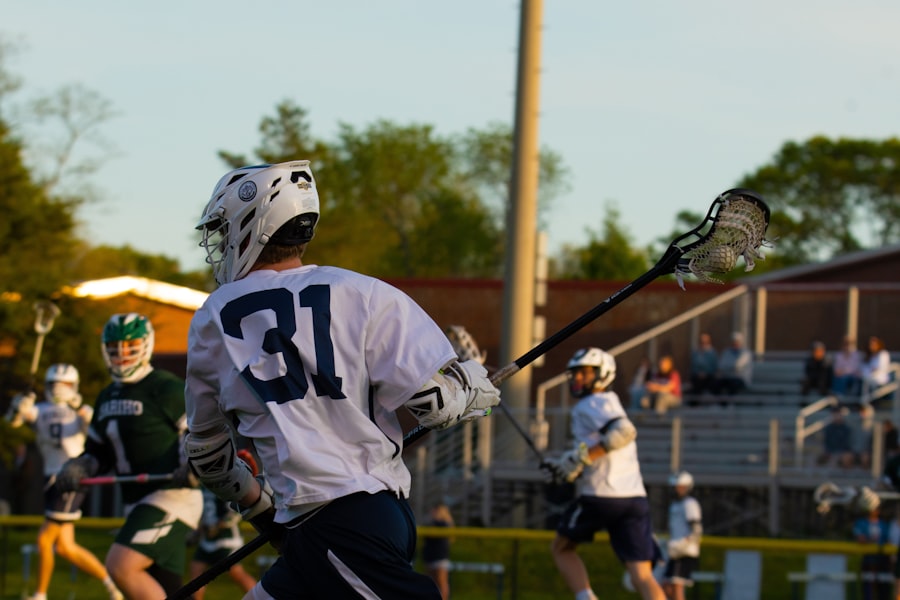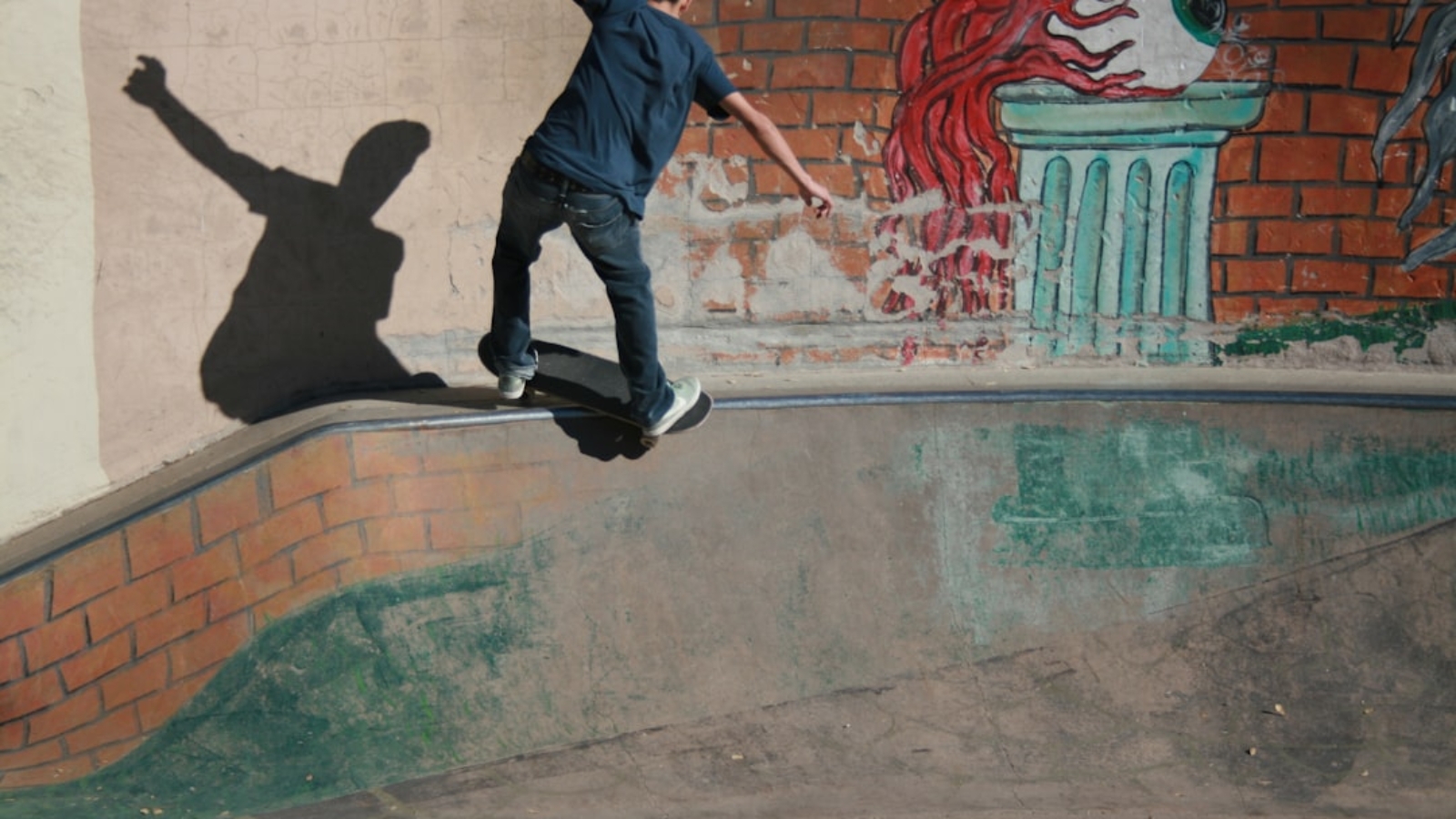High school sports photography is a unique and exhilarating field that allows us to capture the raw energy and emotion of young athletes in action. As we step onto the sidelines, we find ourselves immersed in a world where passion meets competition, and every moment is filled with potential. The thrill of freezing a split-second in time, whether it’s a triumphant goal, a fierce tackle, or a moment of camaraderie, is what draws us to this art form.
We are not just observers; we become storytellers, documenting the journey of these young athletes as they strive for greatness. In high school sports, the stakes may not be as high as in professional leagues, but the intensity and dedication displayed by the players are palpable. Each game is a culmination of hard work, teamwork, and personal growth.
As photographers, we have the privilege of capturing these moments that may otherwise go unnoticed. Our images can evoke emotions, inspire future athletes, and preserve memories for families and communities. This article will explore the essential aspects of high school sports photography, from the equipment we need to the techniques that help us capture the essence of the game.
Key Takeaways
- High school sports photography captures the excitement and passion of young athletes in action.
- Essential equipment for high school sports photography includes a DSLR camera, telephoto lens, and monopod.
- Techniques such as panning and burst shooting help capture the fast-paced action of high school sports.
- Finding unique angles and perspectives can add depth and interest to sports photos.
- Timing and anticipation are crucial for capturing the decisive moments in high school sports photography.
Equipment and Gear for High School Sports Photography
When it comes to high school sports photography, having the right equipment is crucial for achieving stunning results. We often start with a reliable camera body that can handle fast-paced action. DSLRs and mirrorless cameras are popular choices due to their versatility and ability to perform well in various lighting conditions.
A camera with a fast autofocus system allows us to track moving subjects more effectively, ensuring that we don’t miss those critical moments. Lenses play a significant role in our photography as well. A fast telephoto lens, such as a 70-200mm f/2.8, is often our go-to choice for capturing athletes from a distance while maintaining sharpness and clarity.
This lens allows us to zoom in on the action without intruding on the game itself. Additionally, we might consider using a wide-angle lens for capturing team huddles or the overall atmosphere of the event. Having a variety of lenses at our disposal enables us to adapt to different situations and compositions.
Techniques for Capturing the Action in High School Sports

Capturing action in high school sports requires a combination of technical skills and an understanding of the game itself. One of the most effective techniques we can employ is panning, which involves moving our camera in sync with a moving subject. By using a slower shutter speed while following the athlete’s movement, we can create a sense of motion while keeping the subject sharp.
This technique adds dynamism to our images and conveys the speed and intensity of the sport. Another essential technique is mastering our camera settings. We often shoot in burst mode to capture multiple frames per second, increasing our chances of getting that perfect shot.
Setting our camera to continuous autofocus ensures that we can keep up with fast-moving athletes. Additionally, adjusting our ISO settings based on the lighting conditions allows us to maintain a fast shutter speed, preventing motion blur while still capturing crisp images. Understanding these techniques helps us become more adept at freezing those fleeting moments that define high school sports.
Tips for Finding the Best Angles and Perspectives
Finding the best angles and perspectives is key to creating compelling sports photographs. We often experiment with different vantage points to add depth and interest to our images. Shooting from a low angle can emphasize the athletes’ power and determination, while capturing them from above can provide context and showcase their surroundings.
We might also consider positioning ourselves along the sidelines or behind the goalposts to capture unique perspectives that tell a more complete story. Timing is also crucial when it comes to angles. We need to anticipate where the action will unfold and position ourselves accordingly.
Observing the players’ movements and understanding their strategies can help us predict when and where key moments will occur. By being proactive in our positioning, we can capture decisive moments that resonate with viewers and convey the excitement of the game.
The Importance of Timing and Anticipation in Sports Photography
Timing and anticipation are perhaps the most critical elements in sports photography. We must develop an instinct for when to press the shutter button, as many defining moments happen in an instant. This skill comes with experience; as we spend more time photographing games, we begin to recognize patterns in player movements and game dynamics.
By honing our ability to anticipate these moments, we can capture images that truly reflect the spirit of competition. Moreover, being aware of the game’s rhythm allows us to prepare for pivotal moments such as goals, touchdowns, or significant plays. We often find ourselves watching not just the ball but also the players’ body language and interactions with one another.
This heightened awareness enables us to be ready when those electrifying moments occur, ensuring that we don’t miss out on capturing the essence of high school sports.
Editing and Post-Processing for High School Sports Photography

Once we’ve captured our images, editing and post-processing become essential steps in refining our work. We often start by selecting our best shots from the event, focusing on those that convey emotion or action effectively. Using software like Adobe Lightroom or Photoshop allows us to enhance our images further by adjusting exposure, contrast, and color balance.
These adjustments can make a significant difference in how our photos are perceived. In addition to basic edits, we might also consider cropping our images for better composition or applying sharpening techniques to enhance details. While editing is an opportunity to enhance our work, it’s important for us to maintain a natural look that reflects the authenticity of the moment.
Striking this balance ensures that our photographs remain true to the spirit of high school sports while still showcasing our artistic vision.
Building Relationships with Athletes and Coaches for Better Photos
Building relationships with athletes and coaches can significantly enhance our sports photography experience. When we take the time to connect with players and coaches, we create an environment where they feel comfortable around us. This rapport often leads to more candid moments and genuine expressions during games, resulting in more impactful photographs.
Moreover, understanding each athlete’s personality and style can help us anticipate their movements on the field or court. Coaches may also provide insights into their strategies or key players to watch during a game, allowing us to position ourselves more effectively for capturing critical moments. By fostering these relationships, we not only improve our photography but also contribute positively to the overall experience of high school sports.
Preserving and Sharing High School Sports Memories through Photography
High school sports photography serves as a powerful tool for preserving memories that families and communities cherish for years to come. Our images capture not just athletic achievements but also friendships, teamwork, and personal growth experienced by young athletes during their formative years. By documenting these moments, we help families relive their children’s journeys long after they’ve graduated.
Sharing these photographs through various platforms—whether it’s social media, school websites, or community newsletters—allows us to celebrate these athletes’ accomplishments collectively. It fosters a sense of pride within schools and communities while inspiring future generations of athletes. Ultimately, high school sports photography is about more than just taking pictures; it’s about creating lasting memories that resonate with everyone involved in these young athletes’ lives.
In conclusion, high school sports photography is an art form that requires skill, dedication, and an understanding of both photography techniques and the dynamics of sports. By equipping ourselves with the right gear, mastering essential techniques, building relationships with athletes and coaches, and preserving memories through thoughtful sharing, we can create powerful images that celebrate the spirit of youth sports. As we continue on this journey, we find joy not only in capturing action but also in telling stories that inspire others through our lens.
If you’re interested in sports photography beyond high school events, you may want to check out this article on running event sports photography. Capturing the energy and excitement of a race can create lasting memories just like capturing high school sports moments. Visit the gallery on All Star Legends website to see more stunning sports photography examples.
FAQs
What is high school sports photography?
High school sports photography involves capturing images of high school athletes participating in various sports activities such as football, basketball, soccer, track and field, and more.
What is the importance of high school sports photography?
High school sports photography is important as it helps to document and preserve the memories of high school athletes and their achievements. It also provides a visual record of the dedication, hard work, and sportsmanship displayed by the students.
What are the key elements of high school sports photography?
Key elements of high school sports photography include capturing action shots, emotional moments, team camaraderie, and individual athlete portraits. It also involves using proper lighting, composition, and timing to capture compelling images.
How can high school sports photography create lasting memories?
High school sports photography creates lasting memories by capturing the defining moments of a student athlete’s high school career. These images serve as a reminder of their accomplishments, friendships, and the overall experience of being part of a sports team.
What equipment is typically used for high school sports photography?
Photographers often use professional DSLR cameras, telephoto lenses, and external flashes for high school sports photography. Additionally, tripods, monopods, and camera bags are commonly used to ensure stability and protection of the equipment.
What are some tips for capturing great high school sports photos?
Some tips for capturing great high school sports photos include familiarizing oneself with the sport being photographed, anticipating the action, using fast shutter speeds to freeze motion, and finding unique angles to capture the intensity and emotion of the game. Additionally, building a rapport with the athletes and coaches can lead to more authentic and impactful images.


